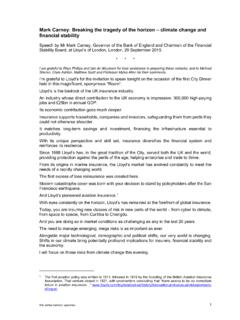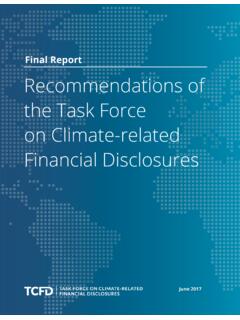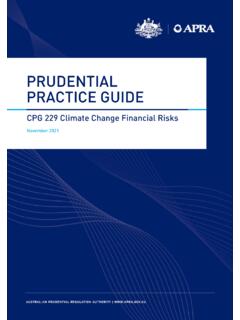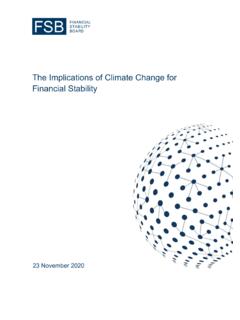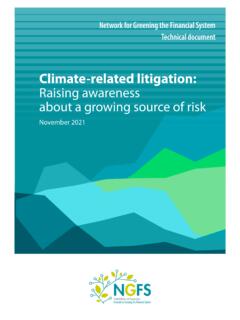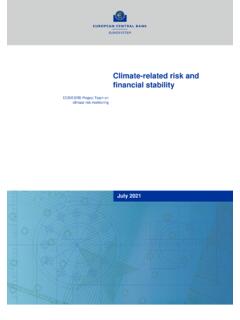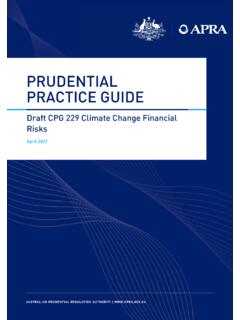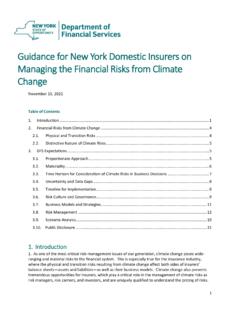Transcription of The green swan - Central banking and financial stability ...
1 The green swan Central banking and financial stability in the age of climate change Patrick BOLTON - Morgan DESPRES - Luiz Awazu PEREIRA DA SILVA Fr d ric SAMAMA - Romain SVARTZMANJ anuary 2020 BISISBN 978-92-9259-325-4 (print)ISBN 978-92-9259-326-1 (online) Bank for International Settlements 2020. All rights reserved. views expressed in this publication are those of the authors and do not necessarily reflect those of their respective institutions. The green swan: Central banking and financial stability in the age of climate change iii Abstract climate change poses new challenges to Central banks, regulators and supervisors.
2 This book reviews ways of addressing these new risks within Central banks financial stability mandate. However, integrating climate -related risk analysis into financial stability monitoring is particularly challenging because of the radical uncertainty associated with a physical, social and economic phenomenon that is constantly changing and involves complex dynamics and chain reactions. Traditional backward-looking risk assessments and existing climate -economic models cannot anticipate accurately enough the form that climate -related risks will take.
3 These include what we call green swan risks: potentially extremely financially disruptive events that could be behind the next systemic financial crisis. Central banks have a role to play in avoiding such an outcome, including by seeking to improve their understanding of climate -related risks through the development of forward-looking scenario-based analysis. But Central banks alone cannot mitigate climate change . This complex collective action problem requires coordinating actions among many players including governments, the private sector, civil society and the international community.
4 Central banks can therefore have an additional role to play in helping coordinate the measures to fight climate change . Those include climate mitigation policies such as carbon pricing, the integration of sustainability into financial practices and accounting frameworks, the search for appropriate policy mixes, and the development of new financial mechanisms at the international level. All these actions will be complex to coordinate and could have significant redistributive consequences that should be adequately handled, yet they are essential to preserve long-term financial (and price) stability in the age of climate change .
5 Iv The green swan: Central banking and financial stability in the age of climate change Acknowledgements We acknowledge suggestions, comments and contributions by: Michel Aglietta, Thomas Allen, Nathalie Aufauvre, Lisa Biermann, Jean Boissinot, Antoine Boirard, Cl ment Bourgey, R gis Breton, Ben Caldecott, Emanuele Campiglio, Adam Cap, Pierre Cardon, Michel Cardona, Hugues Chenet, Val rie Chouard, Laurent Clerc, Beno t C ur , St phane Dees, Simon Dikau, Torsten Ehlers, Frank Elderson, Ulrike Elsenhuber, Etienne Espagne, Gauthier Faure, Ingo Fender, Antoine Godin, Ian Goldin, Sylvie Goulard, Kevin Hoskin, Kumar Jegarasasingam, Joaquim Levy.
6 David Lunsford, Sabine Mauderer, Jean-Fran ois Mercure, Juliette Mollo, Xavier Musca, William Oman, Adrian Orr, Alban Pyanet, Fernando Restoy, Guilllaume Richet-Bourbousse, Dilyara Salakhova, Edo Schets, Nicholas Stern, Josu Tanaka, Jakob Thom , Charlotte Vailles, Pierre-Fran ois Weber and Jeffery Yong. All errors are exclusively our own. We also thank the BIS communications team (Maria Canelli, Emma Claggett, Krista Hughes, Nathalie Savary, Fanny Sorgato and Victoria Torrano), and Giulio Cornelli, Alan Villegas and Adam Cap for excellent research assistance.
7 The green swan: Central banking and financial stability in the age of climate change v Contents Abstract ..iii Acknowledgements .. iv Foreword by Agust n Carstens .. vii Foreword by Fran ois Villeroy de Galhau .. viii Executive Summary .. 1 Box A: From black to green swans .. 3 Box B: The five Cs contribute to coordination to combat climate change : the risk, time horizon and system resilience 4 1. INTRODUCTION PLANET EARTH IS FACING A climate EMERGENCY .. 5 Carbon pricing and beyond.
8 6 Revisiting financial stability in the age of climate change .. 8 Outline .. 9 2. climate change IS A THREAT TO financial AND PRICE stability .. 11 climate change as a severe threat to ecosystems, societies and economies .. 11 The redistributive effects of climate change .. 15 climate change as source of monetary instability .. 16 climate change as a source of financial instability .. 17 Box 1: Introduction to stranded assets .. 19 The forward-looking nature of climate -related risks towards a new epistemology of risk.
9 20 3. MEASURING climate -RELATED RISKS WITH SCENARIO-BASED APPROACHES: METHODOLOGICAL INSIGHTS AND CHALLENGES .. 23 Box 2: Methodological uncertainty surrounding the monetary value of stranded assets .. 24 climate -economic models versus deep uncertainty an overview .. 25 Box 3: A multi-layered perspective on socio-technical 30 climate -related uncertainties and the choice of scenarios .. 33 Translating a climate -economic scenario into sector- and firm-level risk assessments .. 36 Box 4: The Netherlands Bank s climate stress test.
10 36 From climate -related risk identification to a comprehensive assessment of financial risk .. 41 From climate -related risk to fully embracing climate uncertainty towards a second epistemological break .. 42 Box 5: New approaches for forward-looking risk management: non-equilibrium models, sensitivity analysis and case studies .. 44 vi The green swan: Central banking and financial stability in the age of climate change 4. POLICY RESPONSES Central BANKS AS COORDINATING AGENTS IN THE AGE OF climate UNCERTAINTY.










